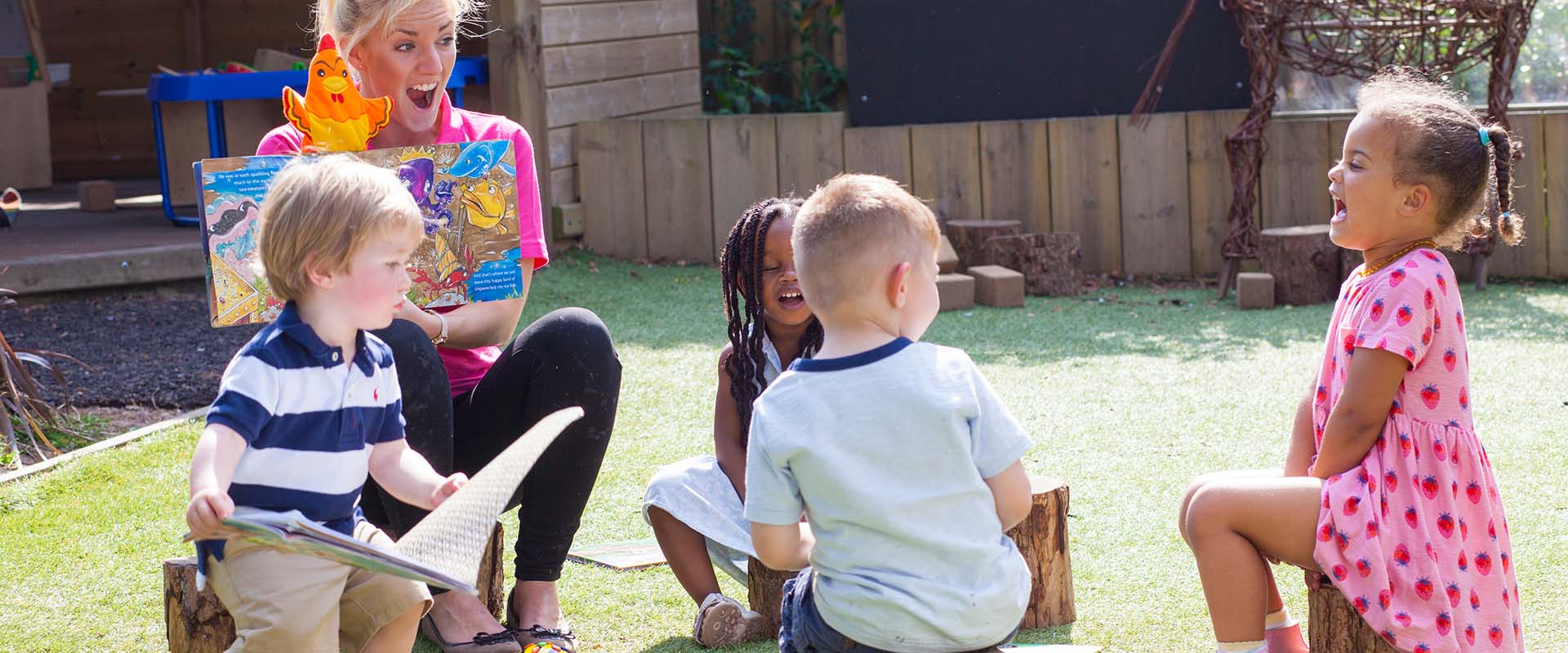10 Ideas To Make Story Time Fun

There are so many ways to spark children’s interest and learning. With these simple ideas using well-loved children’s books, children (and adults) can use literature to extend their learning even after a story ends. Note that these suggestions will give you a place to start and can lead in many directions, based on children’s interests.
- Books are perfect for building vocabularies. Take note of any new or unfamiliar words you read in a book, or create a word wall. Make a guess at what it means based on the context of the story or the illustrations. Then look up the word to see if your guess was right.
- Consider the topic or message of the book, and choose other books to build on a similar idea.
- Use illustrations to inspire new works of art. Explore different techniques and mediums and try them yourself. Combine sketches and watercolours like Beatrix Potter’s The Tale of Peter Rabbit. Alternatively, create bold collages like Lois Ehlert in Leaf Man.
- Build from books to create opportunities to explore other concepts like math, science, and ongoing projects. For example, The Very Hungry Caterpillar by Eric Carle can be used to help children to understand the concept of sequencing, explore the life cycle of insects, and even create a butterfly garden to care for over time.
- Reading aloud is a great way to share books, but there are other ways, too. Have your child explore picture books independently, listen to audiobooks, or stream children’s books through Storyline Online. Make reading time more enticing by setting up a special space for it, like a fort or tent supplied with torches.
- After reading a book, reflect on the story. What was your favourite part? What would you do if you were in the character’s shoes? What do you think happened after the story ended?
- Let books like Dragons Love Tacos by Adam Rubin and Cloudy with a Chance of Meatballs by Judi Barrett to inspire cooking projects. Take it even further by providing a cookbook for children to find more recipes to create!
- Relive a tale in a new way by acting it out. Create props and costumes to do a dramatic retelling, or set up a stand with hand puppets.
- Get to know the parts of a book by introducing its cover, back, spine, author, and illustrator. Make sure you show care and respect for books by turning the pages gently from the corner and placing the books in safe spots like baskets or shelves.
- Explore different types of literature beyond picture books — chapter books, books of poetry, books of fact, fiction, photography, and so many more. Creating a daily routine for reading is a great way to progress through books with longer chapters, like Charlotte’s Web by E.B. White, The Wonderful Wizard of Oz by L. Frank Baum, or a series such as Little House on the Prairie by Laura Ingalls Wilder.





